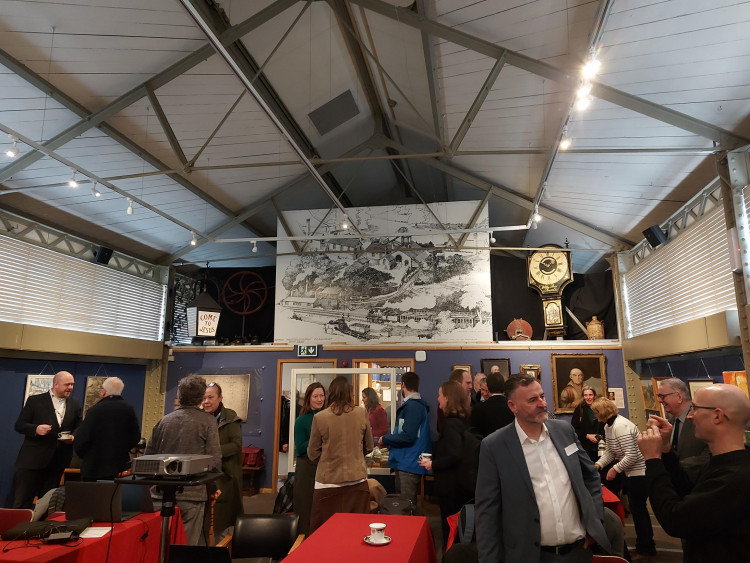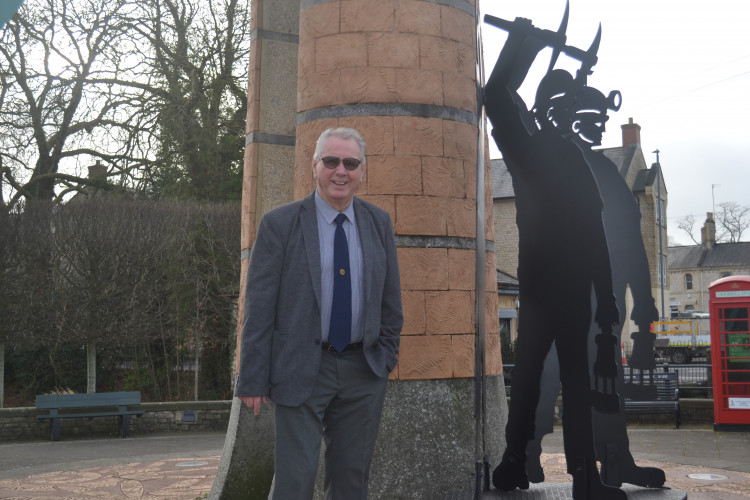Could the pits of the past be the energy sources of the future? Flooded and forgotten mines of Somerset could be energy networks
By Susie Watkins 24th Jan 2024
By Susie Watkins 24th Jan 2024

A £1.6 million project has been launched to explore whether the Somerset mines could be the answer to cheap, green energy for thousands of homes and maybe even a local hospital.
It is very early days but the project, launched today (January 24) fittingly at the Somerset Coalfield Museum in Radstock, is set to explore and plot all the local mines to see whether any of them could be used as energy centres.
WECA Mayor Dan Norris, who announced the initiative, said the idea, long talked about by engineering brains around the old Somerset coalfield, is now closer to being a reality with the need to find cheaper sources of energy in a cost of living crisis, and greener energy in a climate emergency, worth exploring.
There is the potential to heat 100,000-plus homes in the West as well as other buildings like schools, hospitals and offices, through regional heat networks
Mr Norris, who praised the Radstock Museum as one of his favourite places, told a crowd of experts and local and national media, that this exciting project meant even more to him because he comes from a mining family. In a joke he told them; " This is the kind of underground I can back."
The scheme will see the mining area mapped, starting this summer, and then in next stage, deciding priority areas, so those disused mines, the last of which closed down fifty years ago, is most likely to be viable in terms of bringing up hot water.
The project is not cheap, boring down into the mines costs, said the Mayor around £1,000 a metre and might entail mining down up to 400 metres, but the engineering capability is already running up in Gateshead where the Coal Authority, which owns the former mines, uses heated water to heat some homes and the local art gallery.

The Mayor of Radstock Cllr Chris Dando told Nub News: " There have been schemes run in former coal fields which have proved it is economically viable and it is relatively straightforward to do."
Essentially engineers bore down into the water in the flooded mines, which can be up to 20 degrees, and then that is brought to the surface.
" We have this amazing opportunity in Norton Radstock to look at this, because there are probably quite a lot of mines which would be suitable for doing this. At least ten mines around here (could work) the Coal Authority will be able to check."
" This could mean energy and heat could be brought from underground and we could have a district heating scheme where instead of going for gas boilers and heat pumps everybody could have their heat and power pumped in from a central location, which would be a lot cheaper and a lot more environmentally sustainable."
The project was announced as Hinkley C costs of providing nuclear energy could could hit £46bn - up over a third on original estimates - and the completion date could also be delayed by three years.
" I am really excited," said Cllr Dando. " Radstock was a leader in power generation through coal, now it has an opportunity to do that again, using those redundant workings, so you get a double hit. "
None of the hundreds disused mines across the west have been ruled out of being possible sources of heat, with the Coal Authority explaining to Nub News that each will be judged on whether the energy can be accessed, how easily and at what depth.
So it is not a question of certain disused mines being ruled out because they are too deep or that they are on the other side too shallow.
But there will remain a question about who know owns the land under which the old mines now stand.
"It is fitting that it could fall to the mining industry to offer up energy solutions, " Dan Norris told the audience. " I think about thousands of homes being heated by this.. Paulton Memorial Hospital being warmed.. heat extraction has so many possibilities and we are right to explore them."
The process will see all the mines mapped, ruling out those which may have been backfilled, and then 20 cm bore holes drilled at 'priority areas' to get an idea of how possible energy extraction can be - but the engineers at the Radstock event insist the process DOES work.

Mines were part of the problem, could they now be the answer to global warming?
Retired miner Bryn Hawkins at 82 who was there to show support for the project said: " I am fascinated by the idea. It is got to be exciting that these old mine workings could be used. I can't say I completely understand the technology, but what a fantastic thing this could be for us all locally."
Gareth Farr, Head of Heat at the Coal Authority said: "The Coal Authority is committed to facilitating mine water heat networks across Great Britain.
"We hope that the industrial heritage of coal mining in the West of England Mayoral Combined Authority will also be able to support mine water heat networks in the future."
CHECK OUT OUR Jobs Section HERE!
midsomernorton vacancies updated hourly!
Click here to see more: midsomernorton jobs
Share:




